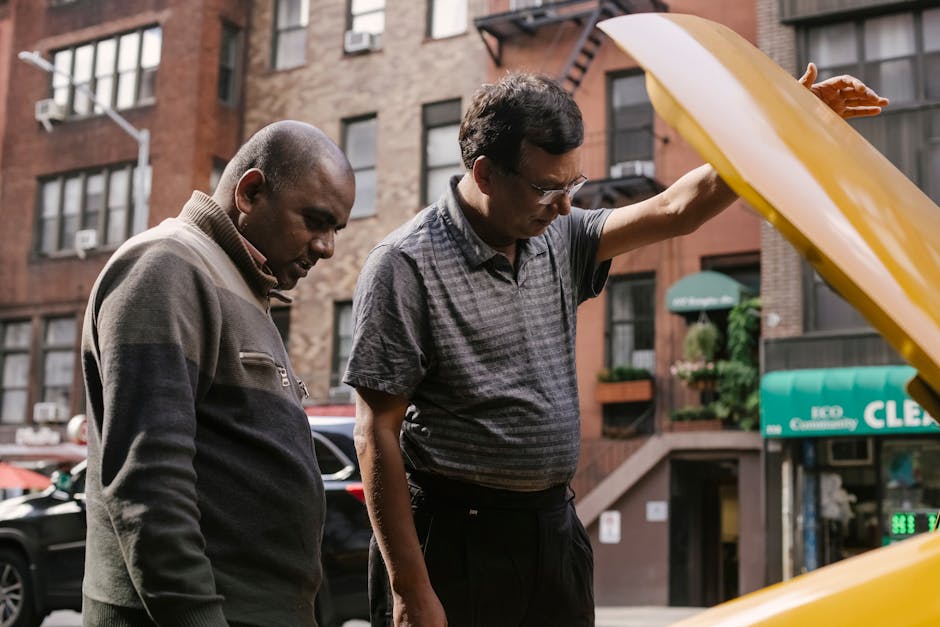How to Troubleshoot Common Problems in Vintage Cars

Vintage cars hold a special place in automotive history, and their timeless charm attracts enthusiasts and collectors alike. However, owning a vintage car comes with its unique set of challenges, primarily due to the outdated technology and parts that are no longer readily available. Troubleshooting common problems in these classic vehicles requires a blend of mechanical knowledge, patience, and sometimes a bit of ingenuity. This article will guide you through some of the most frequent issues vintage car owners encounter and provide practical solutions to keep these beauties on the road.
Electrical System Issues
One of the most common problems vintage car owners face is with the electrical system. Unlike modern vehicles, vintage cars often have simpler but less reliable electrical systems. Issues can range from faulty wiring to dead batteries.
Battery Problems: Vintage car batteries can lose charge quickly, especially if the vehicle isn't driven regularly. To troubleshoot:
- Check the battery terminals for corrosion and clean them if necessary.
- Ensure the battery is holding a charge by using a multimeter.
- Consider using a trickle charger to maintain battery life when the car is not in use.
Wiring Issues: Over time, wires can become brittle and break, leading to various electrical problems. To address wiring issues:
- Inspect all visible wiring for signs of wear or damage.
- Replace any damaged wires with appropriate gauge wire.
- Use proper connectors and ensure all connections are secure to prevent shorts.
Fuel System Troubles
Fuel system issues are another common headache for vintage car owners. Carburetors, fuel pumps, and fuel lines can all develop problems over time.
Carburetor Problems: Carburetors can become clogged or out of tune, leading to poor engine performance. To troubleshoot carburetor issues:
- Check for any vacuum leaks around the carburetor base.
- Clean the carburetor jets and passages with a carburetor cleaner.
- Adjust the idle mixture screws according to the manufacturer's specifications.
Fuel Pump Failures: Mechanical fuel pumps in vintage cars can fail due to age. To check for fuel pump issues:
- Ensure there is fuel reaching the carburetor by disconnecting the fuel line and cranking the engine.
- If no fuel is present, inspect the pump for leaks or damage.
- Consider replacing an old mechanical pump with an electric one for improved reliability.
Cooling System Problems
The cooling system in vintage cars can also pose challenges, as older radiators and water pumps may not perform as efficiently as modern ones.
Overheating: Overheating is a common issue in vintage cars, especially during hot weather or heavy traffic. To prevent overheating:
- Ensure the radiator is clean and free from obstructions.
- Check the coolant level regularly and top it up as needed.
- Inspect hoses for cracks or leaks and replace them if necessary.
Water Pump Failure: A failing water pump can lead to inadequate cooling. To diagnose water pump problems:
- Look for coolant leaks around the pump housing.
- Listen for unusual noises coming from the pump area while the engine is running.
- If in doubt, replace the water pump with a new one to avoid engine damage.
Brake System Concerns
The braking system in vintage cars is another critical area that requires regular attention. Drum brakes and older hydraulic systems can develop issues over time.
| Problem | Solution |
|---|---|
| Squeaking Brakes | Squeaking can indicate worn brake pads or contaminated brake surfaces. Inspect pads for wear and replace if necessary; clean brake components thoroughly to remove any contaminants. |
| Poor Braking Performance | Poor braking performance may be due to air in hydraulic lines or worn brake shoes/pads. Bleed brakes to remove air bubbles; inspect and replace worn components accordingly. |
| Pulsating Brake Pedal | A pulsating pedal can indicate warped brake drums or rotors. Measure drum/rotor runout and machine or replace if out of specification. |
Troubleshooting Tips
Troubleshooting vintage car issues can be daunting but following these general tips can help streamline the process:
- Use Original Manuals: Refer to original service manuals specific to your car's make and model for accurate troubleshooting steps and specifications.
- Sourcing Parts: Finding original parts can be challenging. Explore online forums, specialty shops, and classic car clubs for reliable sources.
- Join Communities:: Engage with fellow vintage car enthusiasts through online forums or local clubs to share knowledge and experiences.
- Simplify Diagnostics:: Focus on one system at a time (electrical, fuel, cooling) rather than attempting multiple repairs simultaneously.
- Mental Preparation:: Patience is key; expect trial-and-error in diagnosing obscure or intermittent issues.
Troubleshooting common problems in vintage cars requires diligence, attention to detail, and sometimes creative problem-solving. Electrical systems often demand careful inspection of wiring and battery maintenance. Fuel system troubles necessitate regular checks on carburetors and fuel pumps to ensure smooth operation. Cooling system problems such as overheating call for thorough radiator inspections and proper coolant levels. Brake systems need continuous monitoring of pads, hydraulic lines, and drums/rotors.
Ultimately, maintaining a vintage car goes beyond mere mechanics—it's about preserving a piece of automotive history while enjoying the unique driving experience these classic machines offer.
Engaging with fellow enthusiasts through communities and forums can provide valuable insights and support along With persistence and a methodical approach, keeping your vintage car running smoothly becomes an attainable goal, allowing you to relish every moment behind its wheel.